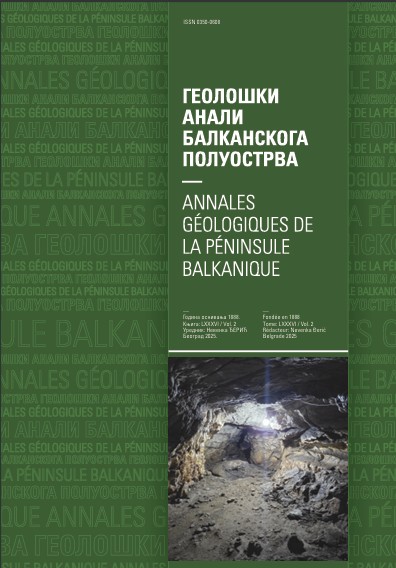Geološka interpretacija rezultata ispitivanja stabilnih izotopa sumpora iz anhidritsko-gipsnog ležišta Lipnica u Gruži kod Kragijevca
Geologocal interpretation of the results of sulphur stable isotope study of the anhidrite-gypsum deposit of Lipnica (Serbia, Yugoslavija)
Abstract
The results of a study of stable isotopes 32S and 34S in the mineral substance of the Upper Jurassic anhydrite-gypsum deposit of Lipnica (Serbia, Yugoslavia) are presented and their geological interpretation is offered. The results (arithmetic mean of δ34S is 12.2‰ and its interval of variation is 11.4—13.2‰) support Ilić’s (1993, 1995) hypothesis of submarine hydrothermal-sedimentary (SEDEX) origin of the deposit. According to the hypothesis principal components of the deposit (sulphate group and calcium) do not originate from the Upper Jurassic sea (it was only an environment in which the deposit was set) but from some deeper-lying (probably Permian) evaporites of predominantly gypsum—anhydrite composition, from which they were mobilized by hydrothermal solutions, associated with the Upper Jurassic basic magmatism. These solutions, circulating through deep submarine faults as well as the accompanying net of fractures, leached SO4-- and Ca++ from the evaporites, transported them upwards and precipitated them on the sea bottom, where hot springs developed, as anhydrite (which was partly gypsified later on). Therefore anhydrite and gypsum from the Lipnica deposit do not exhibit values δ34S characteristic for the Jurassic (about 17‰) but for the Permian and Lower Triassic (12.2‰).
Copyright (c) 1998 Geološki anali Balkanskoga poluostrva

This work is licensed under a Creative Commons Attribution 4.0 International License.










